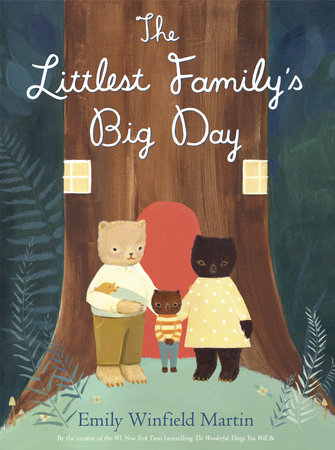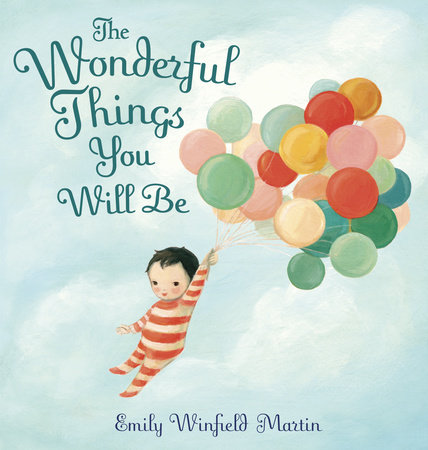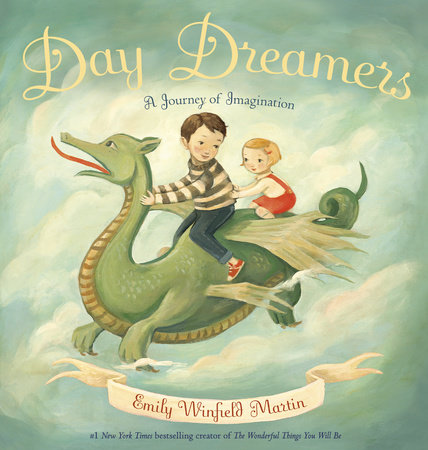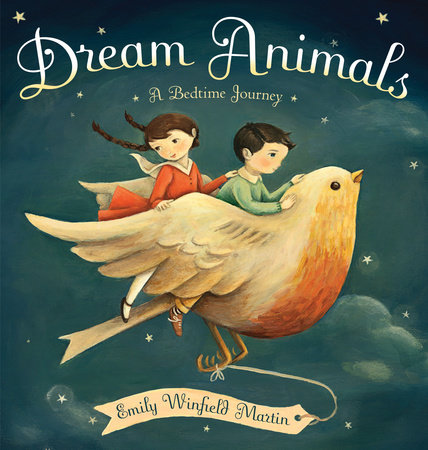Emily Winfield Martin on Daydreams, Drawing, and the Delight of
Small Things
by the Brightly Editors
Emily Winfield Martin’s books have captivated readers of all ages — from the tiniest tots to their parents and grandparents. With an enchanting combination of whimsy, hope, adventure, and artwork pretty enough to hang on the wall, her stories are quickly becoming new classics. Dream Animals and The Wonderful Things You Will Be have spent weeks atop the bestseller lists, and her latest, The Littlest Family’s Big Day, about a tiny family in search of a forest home, is equally charming. We asked Emily about dreams big and small, her favorite critters from children’s literature, and the power and peril in being little in a big world.
Your books have a very hopeful quality to them. Is that sense of hope and possibility and dreaming big dreams something you’re aware of when you’re writing and illustrating?

That’s really nice to hear, because it’s something I have no conscious awareness of at all when I’m working. In my day-to-day life, I tend to get sad and very frustrated about a lot of things in the bigger world. In the immortal words of Dolly Parton in “9 to 5”: “It’s enough to drive you crazy if you let it.” A sense of general hopelessness threatens to surround us and it takes all kinds of shapes.
This is why the dream world is so important to me, and has been my north star since I was little. Not just surreal, imaginary things, but the life you dream into existence for yourself, in whatever small ways you can: the things and people you fill your days with. Gentleness, thoughtfulness, beauty, appreciating the natural world, making things that weren’t there before: the feeling that those things matter. And even if they don’t amount to something measurable at some future time, still, why not? I heard somewhere: There is no one more cynical than a thwarted idealist. And I wonder if the reverse is true, because I’m kind of a thwarted cynic. It kind of feels rebellious to hope.
Speaking of hope and dreams, were you a big daydreamer as a kid? What are some of your most memorable daydreams from childhood?
Well, the two biggest contributors to my childhood daydreams were:
1.) my belief I might actually be Belle from “Beauty and the Beast”
and
2.) my belief that I might otherwise be Matilda
Neither of these dreams were ever fully realized (I can’t make things fly through the air, but I did better on the Belle front: I have a rose garden and live surrounded by books with a very kind man who growls every once in a while). So I moved on to wondering if I might step into a fairy ring, or join a traveling carnival, or meet a sea monster, or become a mermaid*.
* I still wonder these things at least once a week.
The Wonderful Things You Will Be has spent many weeks atop the bestseller lists and feels like a new classic, especially for new parents. Why do you think this book has resonated with so many readers?

It was (and still is) a complete surprise to me. A lovely surprise, but nobody ever dares to think their book will resonate this way. I think people appreciate that it’s warm and loving, but also quirky and funny and a bit surreal. Not too serious, but not glib either. And more than anything, it speaks to the big, extraordinary question mark that any new person is: Who will you be? What will you do?
Can you talk a little bit about the tiny family in The Littlest Family’s Big Day? Why did you choose to make them, well, little? Why did you feel that was important to the story?

I have always had a fascination with little things (I know I am not alone in this). It probably has something to do with early imprinting on the story of Thumbelina. Tiny objects, families of Calico Critters, miniature books, charms for charm bracelets, all things small. I have to believe there are elven families living in all knotted tree trunks, and Borrowers in every wall.
And besides, just imagine what you could do if you were super tiny (ride around in pockets or on the back of a bird, sleep in a walnut, feast on a strawberry, etc.). Although it would also be perilous — you could be swooped upon or squashed so easily. I think it’s both of those things — the sweetness and the inherent danger — that make it so appealing.
Your illustrations of nature, especially in The Littlest Family’s Big Day, are lovely. What are some of your favorite flora and fauna to draw?
I’m in a real moment with ferns and mushrooms and trees right now (because of Littlest Family and also the book I’m working on, a fairy tale of the deep woods). But I also love painting flowers and have been brushing up on my flower skills. It’s tricky business — you can’t force a thing, it all has to be graceful.
I live in a place that is overrun with natural beauty: the city gardens and parks, the mountain forests with their waterfalls and ancient ferns, the misty ocean to the west.
Looking back, what critters or creatures or characters from children’s literature have stayed with you into adulthood?
Owl from Arnold Lobel’s Owl at Home is one of my all-time favorites. We are a lot alike, me and Owl. Rat, Mole, and Badger from The Wind in the Willows, who carved a place into my heart and who I have to revisit every year or two or else I’ll miss them. This is adding up to a lot of middle-aged British bachelor animals, so who else…
Victorian fairy paintings, Little Bear, from Elsa Minarik and Maurice Sendak. The Caterpillar and Cheshire Cat from the Alice stories, who fascinated and frightened me (entirely the point). And last but not least, Margaret Wise Brown and Garth Williams’s Little Fur Family, to whom The Littlest Family is a love letter!
-
Books by Emily Winfield Martin:
-
The Wonderful Things You Will Be
Also available from:Day Dreamers
Also available from:Dream Animals
Also available from:




